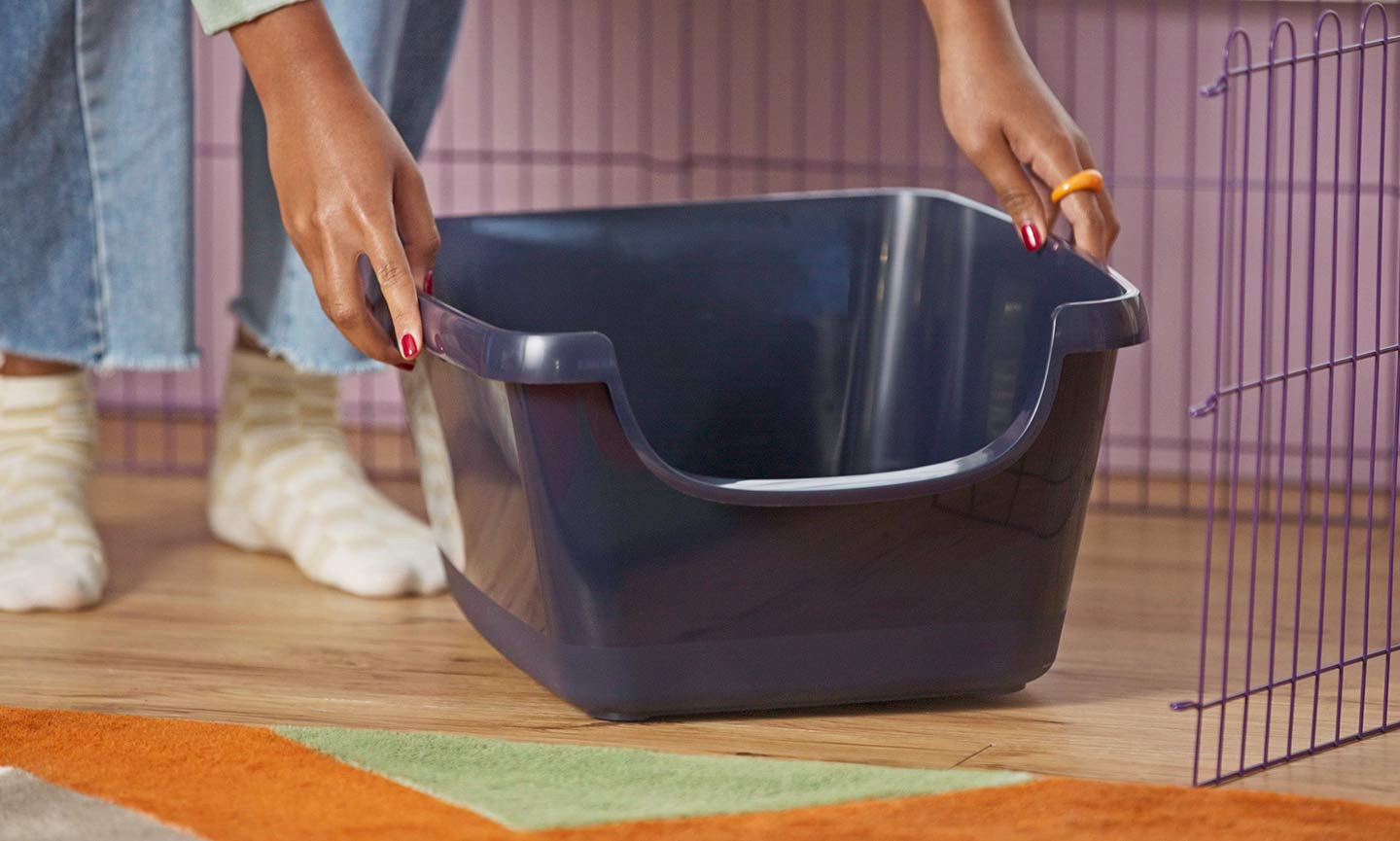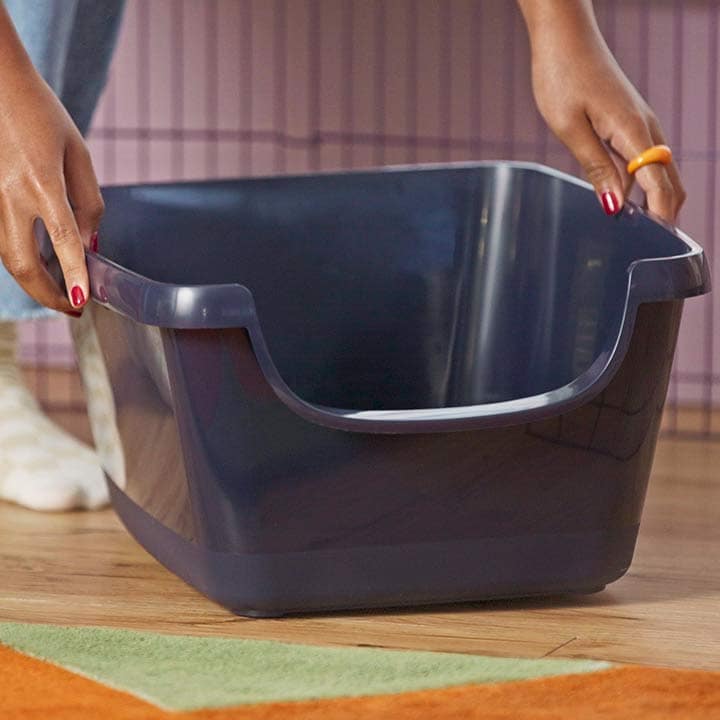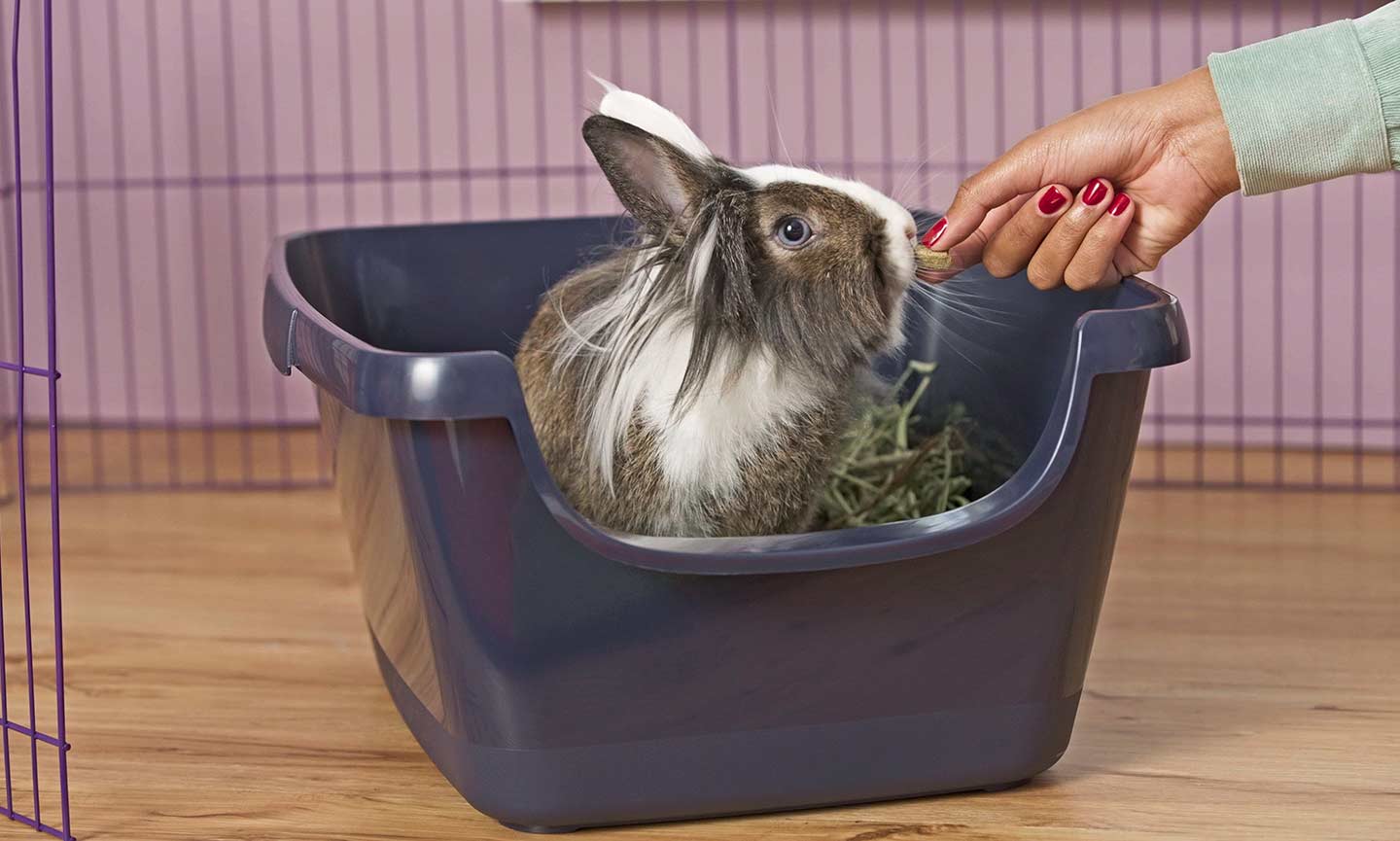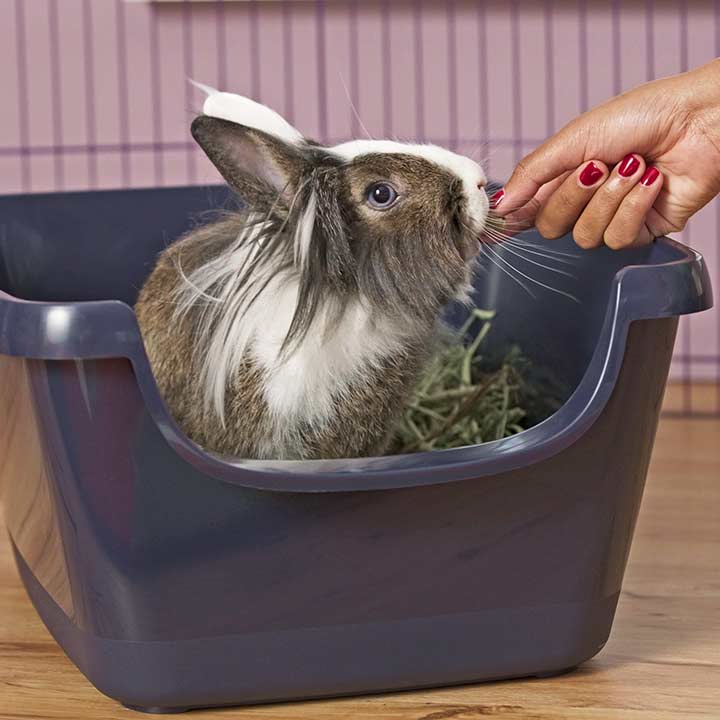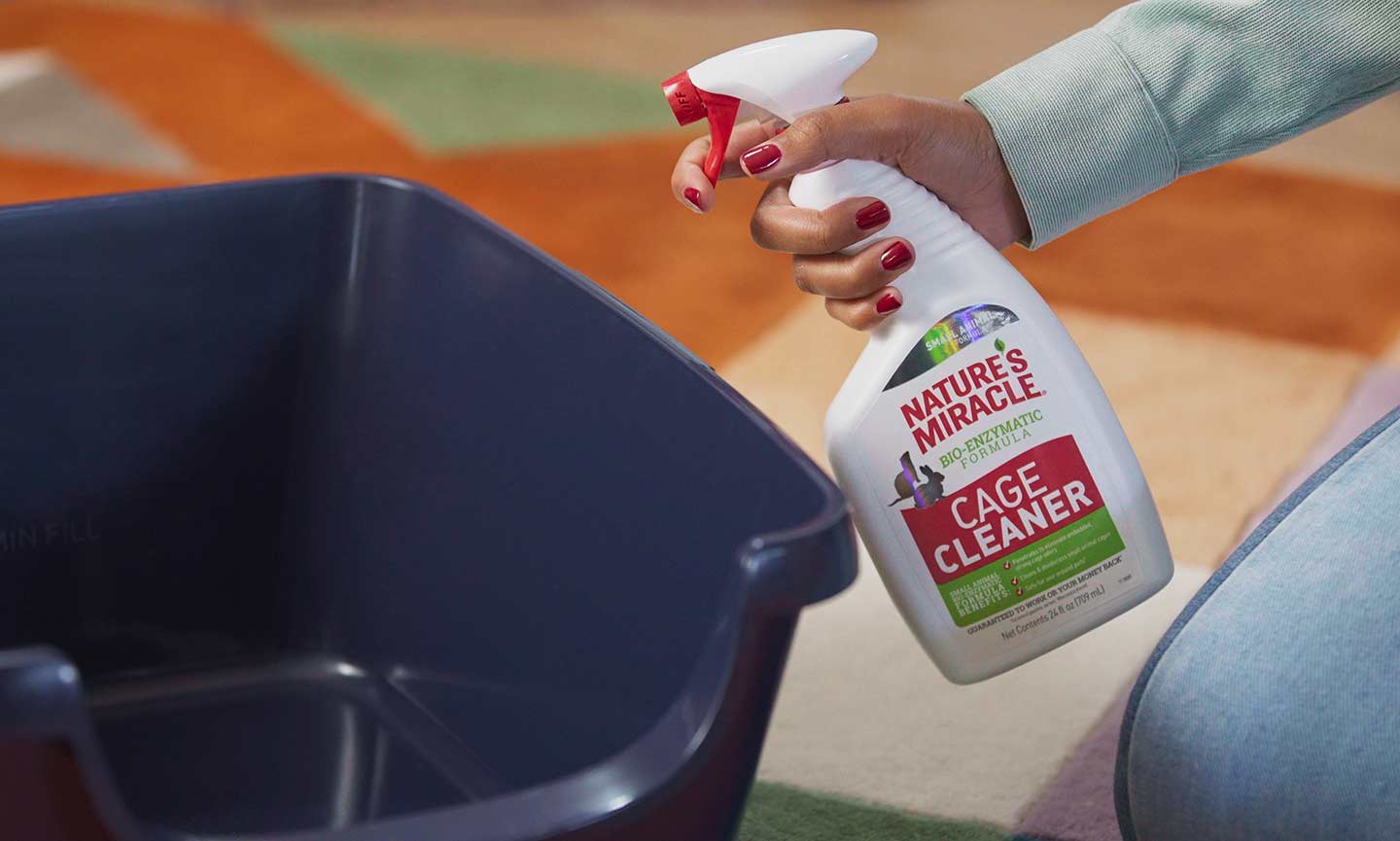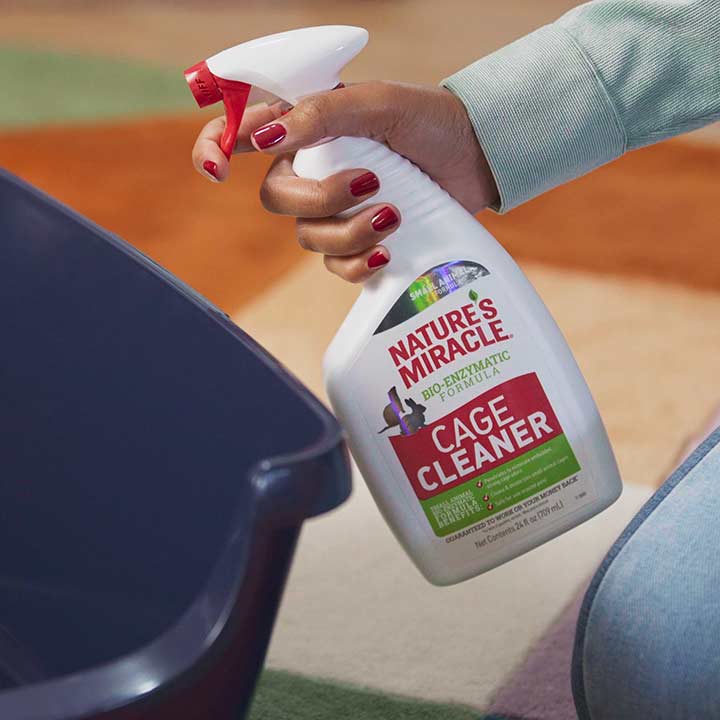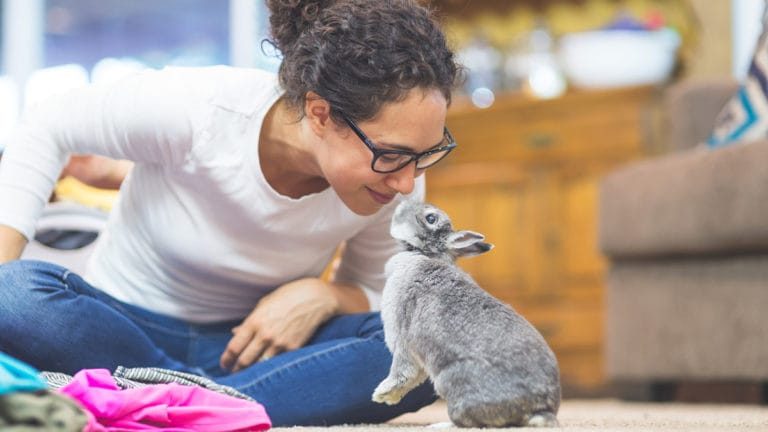Dogs can be housetrained. Cats learn to use a litter box. But can you potty train a rabbit? Absolutely! In fact, rabbits usually take to litter training quite easily.
“Rabbits are incredibly fastidious and clean animals,” which makes them easy to litter train, says Brittany Schlacter, an educator for the House Rabbit Society and director of West Michigan Critter Haven in Grand Rapids, Michigan. In fact, that they sometimes even learn how to use a rabbit litter box all by themselves.
But even if your hopping cutie isn’t a natural, getting them to use a litter box is usually simple—especially when compared to, say, potty training a dog. Follow these tips from Schlacter to learn how to litter train a rabbit.
Click the buttons below to jump to each section:
The Benefits of Litter Training Rabbits
Let’s be real: For pet parents, the biggest benefit of litter training your rabbit is less mess to clean up around the house, along with a fresher-smelling home. But did you know that litter training is also better for your bunny? There are several reasons why:
- Tracking Their Health: You can tell a lot about a rabbit’s health from their droppings, including whether their diet is too rich or doesn’t have enough nutrients. That will allow you to catch and address any potential problems as early as possible. Check out the House Rabbit Society’s guide to rabbit droppings to learn more.
- Giving Them Their Own Space: When done properly, litter training creates a happy place for your rabbit to spend their time. Rabbits really enjoy their litter box and often spend time sleeping, eating and playing inside of it.
- Freedom to Roam: Once your rabbit has been properly trained, they can hop around more freely, giving them more mental stimulation—and you’ll have the peace of mind knowing that they’ll head to the bunny litter spot when they need to do their business.
When to Litter Train Your Rabbit
How early can you start litter training your rabbit? Schlacter suggests around 4 months old, after your bunny has been spayed or neutered.
That’s not because younger rabbits can’t learn to use a litter box. In fact, some bunnies begin using a box with no training at only a couple months old. But when puberty kicks in around 3 to 4 months of age, rabbits’ potty habits typically become inconsistent. This awkward “teenage” phase can undo all the progress you made with your young bunny, Schacter says.
For that reason, it’s best to wait until your rabbit has been spayed or neutered, which is recommended for all rabbits around 4 months old. “Typically, your rabbit will take to the litter box quickly after the procedure,” she says.
What You’ll Need to Litter Train a Rabbit
- Large litter box with low sides, like this one from KittyGoHere
- Small pet bedding or litter
- Timothy hay
Choosing The Best Rabbit Litter Box
When it comes to bunny litter boxes, there are two qualities you should look for:
- A large size: A large and roomy box is most comfortable for bunnies. Rabbits like to sleep, eat, and even play in their litter box, so you’ll want to give them the space to do all that. The amount of room each rabbit needs will vary, but in general, a box with sides 20 inches or longer should do the trick.
- At least one low edge: A box with high edges will be difficult for your bunny to enter, which could interfere with the litter training process. Make sure your box has at least one low edge so it’s easy for them to hop in.
Choosing The Best Bedding and Litter for Rabbits
When it comes to the material you put in your rabbit’s litter box, it’s all about personal preference: bedding or litter. So what’s the difference?
- Bedding is the lightweight, fluffy material that’s usually made out of paper and often comes packaged in shrinkwrapped bags.
- Litter comes in pellets that are more dense, and is typically made out of either paper or clay.
Either type will work great in a rabbit’s litter box, Schacter says, so choose what you like and see if your bunny likes it too. If they seem to be ignoring or avoiding their litter box, you may want to experiment with different types of litter and bedding to find one they like.
No matter what material you choose, avoid cedar and pine shavings, which have phenols that can potentially cause liver and respiratory damage in small animals. (Pellets made from cedar or pine are safe to use, because the phenols are removed during the manufacturing process.) Talk to your veterinarian if you have concerns about how your rabbit’s litter may affect their health.
Don’t Forget Rabbit Hay!
Rabbits love to eat while they go, so remember to add some Timothy hay to the rabbit litter box. You can top the layer of bedding with hay, add a handful on one side, or place a hay rack above the box. Your rabbit may do some rearranging, so pay attention to what they like and follow their lead.
How to Litter Train a Rabbit: A Step-by-Step Guide
1 Find a Place for Your Rabbit Litter Box
Place the bunny litter box in or around the space that they have been using for the bathroom. If your rabbit is free-roaming, this is often a corner of the room, or the place where their hay is.
If your rabbit has been kept in an enclosure up until this point, their preferred spot is probably one corner of that enclosure. To transition them into a free-roaming lifestyle, remove the enclosure and place the litter box as close as possible to the area where the enclosure previously sat.
2 Show Your Rabbit the Litter Box
3 Bring Poop to the Litter Box
If you see your rabbit go outside of the litter box, clean up the urine and bring the droppings to the litter box. This helps them understand that this is the place they should be doing their business.
If your rabbit doesn’t mind being picked up, you can also lift them and place them in the litter box when you see them raise their tail to urinate, Schlacter says. Just be sure to pick up and hold them properly, and do not lift or carry your rabbit if they are not comfortable with it.
4 Clean the Rabbit the Litter Box
The final step in learning how to litter train a rabbit is to make sure the area is cleaned consistently. Change the bedding and hay at least once every other day—and do it daily, if possible. The cleaner your rabbit’s litter box is, the more likely they’ll use it.
Schlacter also recommends soaking the litter box in a solution of 3 parts water and 1 part white vinegar every two to four weeks. Let the box soak for 15 minutes, then rinse well before drying and adding bedding and hay.
Common Rabbit Litter Training Problems and Solutions
Though many rabbits will take to their litter box quickly, you may run into a few potential problems along the way. Here are a few common scenarios, and what to do in each case:
Your Rabbit Keeps Going Outside of the Litter Box
Some rabbits have trouble adjusting to the litter box, especially if they’re older or were spayed or neutered later in life, Schlacter says. If your bunny doesn’t pick up potty training right away, she recommends using an exercise pen to keep them close to their litter box. Give them a smaller space to roam, and they’ll be more likely to do their business in the litter box. Then, when they start using the litter box regularly, you can expand the pen to give them more space, and over time, phase it out completely.
Rabbits’ territorial tendencies can be an obstacle to litter training, too. Schlacter notes that if you have multiple rabbits, “Your rabbit may leave droppings as territorial markings near the other rabbit’s area. This is completely normal behavior.” It’s near-impossible to train these instincts out of your bunny, but you can reduce their territorial markings by keeping your rabbits separate.
She adds that even a fully trained rabbit may leave droppings here and there. Be patient with your bunny, and remember that the occasional accident is a small price to pay for your rabbit’s love and companionship.
Your Rabbit Sleeps in Their Litter Box
It might sound funny, but it’s perfectly normal and natural for rabbits to sleep in their litter box. Just be sure that you clean it regularly to keep their new favorite spot odor-free.
Your Rabbit Urinates Over the Edge
This is a sign that your rabbit litter box is too small, Schlacter says. Upgrading to a larger size will likely fix the problem.
Your Rabbit Kicks Litter Out of the Box
Got a case of a digging rabbit? Cleaning up the litter your bunny kicks out of their box can be a nuisance—we totally get it. To mitigate the problem, try putting less litter in the box.
You can also place a grated mat, like the Fresh Kitty Grate Litter Mat, just outside the box to catch the litter, resulting in less cleanup for you.
If your rabbit really enjoys digging, it may help to give them a separate outlet for that instinct, Schlacter says. Fill a cardboard box with shredded paper or another rabbit-safe digging material and place it someplace accessible to you bunny, but away from their potty area (so they’re less likely to use it as another litter box). That way, your rabbit can indulge their digging instincts to their heart’s content—without making a mess of droppings for you to clean up.
When to See a Veterinarian
If your rabbit isn’t using the litter box and is showing any of the following signs, it’s important to seek veterinary advice:
- Straining to go
- Consistently goes around the litter box but not in it
- Lethargy
- Not eating or drinking
- Weight loss
- Blood in urine or stool
- Diarrhea
All of the above can be signs of medical issues, so don’t hesitate to call your vet with questions.
Read More
Share:

